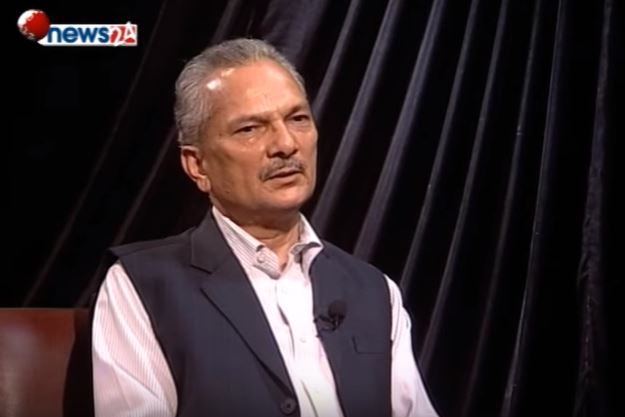Is provincial consent mandatory in US and India for altering provincial boundaries?
Sujit Mainali / March 3, 2017

Photo: Youtube/news24
Naya Shakti Nepal coordinator and former prime minister Baburam Bhattarai said the following during an interview in the ‘Power Views’ program aired on Avenues TV on February 26:
“If the state [country] or its people want to change the number of provinces, then they should be allowed to do so. But we have a constitution that requires approval of both the central and provincial parliaments for making such change. Due to this provision, changing the number of provinces is possible only in theory, but not in practice.”
Bhattarai favors giving federal parliament the final authority to make changes to the number of provinces and views the existing provision requiring approval of the provincial assembly to make such changes as impractical.
What does Nepal’s constitution say?
Article 274 of the Constitution of Nepal-2015 says that the constitution amendment bill can be endorsed by the two-thirds majorities of the existing members in the both houses of the federal assembly.
But clause 4 and 5 of Article 274 mention that if an amendment bill is about provincial boundaries, the bill should also be endorsed by the majority of the provincial assemblies concerned.
What is the practice elsewhere?
South Asia Check has looked at practice in other counties to see whether the federal parliament can solely decide to alter the provincial boundaries or the number of provinces. For this, we studied the constitutions of India and the US.
Indian Constitution
Article 3 of the India’s Constitution has provisions regarding altering the provincial boundaries. This article has accorded ultimate rights on the federal parliament to form a new state [province] by separation of territory from any state or by uniting two or more states or parts of states or by uniting any territory to a part of any state. Similarly, the federal assembly is also empowered to alter the boundaries of provinces and change their names.
According to the constitution, views of the concerned states should be sought on the amendment bill meant for altering its boundary. But still, the views of the state assemblies are not binding on the federal assembly.
US Constitution
Article IV, Section 3, Clause 1 of the US Constitution has provisions regarding making change on the numbers and boundaries of the states. It allows the US Congress (federal parliament) to admit new states into the union. But the Congress solely cannot form or erect new states within the jurisdiction of any other state, nor can it form any state by merging two or more states or parts of states. For this, consent of the legislature of the concerned states concerned is mandatory.
This material is copyrighted but may be used for any purpose by giving due credit to southasiacheck.org.
Comments
Latest Stories
- In Public Interest Covid-19 cases are low, but that’s not an excuse to avoid vaccination
- In Public Interest What is BF.7, the sub-variant that has the world by its grip?
- In Public Interest Threat of a new Covid-19 wave looms large amid vaccine shortage in Nepal
- In Public Interest As cases decline, Covid-19 test centres in Kathmandu are desolate lot
- In Public Interest Dengue test fee disparity has patients wondering if they’re being cheated
- In Public Interest As dengue rages on, confusion galore about what it is and what its symptoms are. Here’s what you need to know
In Public Interest
 Covid-19 cases are low, but that’s not an excuse to avoid vaccination
The Pfizer-BioNTech bivalent vaccines authorised by the Nepal Government provide better protection a...
Read More
Covid-19 cases are low, but that’s not an excuse to avoid vaccination
The Pfizer-BioNTech bivalent vaccines authorised by the Nepal Government provide better protection a...
Read More
- What is BF.7, the sub-variant that has the world by its grip?
- Threat of a new Covid-19 wave looms large amid vaccine shortage in Nepal
- As cases decline, Covid-19 test centres in Kathmandu are desolate lot
- Dengue test fee disparity has patients wondering if they’re being cheated
- As dengue rages on, confusion galore about what it is and what its symptoms are. Here’s what you need to know